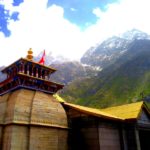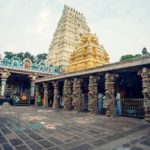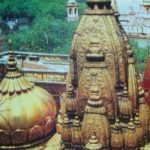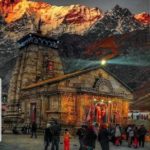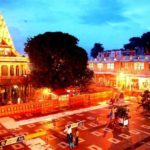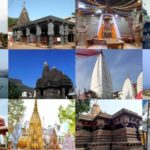Adi Shankaracharya is one of the greatest spiritual masters of India. His teachings are the foundation of many schools of thought. At a time when the country was at a low point in spirituality and superstition and competing sects of religion were dominant, he spread the Advaita philosophy. He was a Jnani, Yogi, Bhakta and also a Karma Yogi. His views on the Advaita philosophy united many different schools of thought in Hinduism.
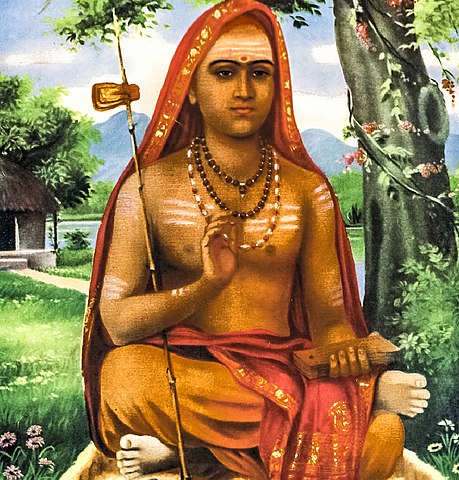
Early Life
Sankara was born in Kaladi, Kerala in the year 788 AD to a Nambudiri Brahmin family. His father Sivaguru and his mother Aryamba were childless and his mother prayed to Lord Shiva for a son. Sankara was born to them in the very auspicious Abhijith Muhurta in the spring season. His father died when he was 7 years old. But his mother ensured that Sankara was well educated in all the Shastras. Sankara was a child of most extraordinary intelligence and mastered all the philosophies by the age of 16.

Sankara’s mother began to look for a bride for him but Sankara was steadfast in his decision to renounce the world and be a Sanyasin. His mother was sorrowful at this desire for she worried about who would serve her at her death bed and perform the funeral rituals. Sankara repeatedly reassured her that he would be at her death bed and perform the funeral rituals but she was not consoled.
Crocodile Incident
One day when Sankara and his mother were bathing in the river, a crocodile grabbed Sankara by the foot. He then called out to his mother and pleaded that he be allowed to die as a Sanyasin. He asked for permission to take Apath-Sanyasa which is renouncing the world when faced with death. His mother immediately consented and amazingly, the crocodile let go of Sankara. So, Sankara came out of the river as a Sanyasin. He reiterated his promise to his mother, left her in the care of his relatives to whom he handed over his properties and then left.

Finding A Guru
Sankara set out to find his Guru to get initiated as a Sanyasin. He met Swami Govindapada Acharya in an ashram in Badrinath in the Himalayas. Sankara was initiated by him as a Sanyasin. Swami Govindapada Acharya then taught Sankara the philosophy of Advaita. He had been taught the Advaita philosophy by his Guru Swami Govindapada Acharya. The Swami then told Sankara to go to Kashi. This was where Sankara wrote his commentaries on the Brahma Sutras, Upanishads as well as the Gita.
India Tour
Adi Sankara travelled to all the leading schools of learning and engaged leaders of different schools of thought in debates. He defeated the leaders of many sects and philosophies and converted them to Advaita philosophy. He defeated Mandana Misra the Chief Pandit of the court of Mahishmati and also his learned wife Bharati. Mandana Misra was of the Karma Mimasa faith and had a great dislike for Sanyasins.

The Great Debate With Mandana And Bharati
Mandana accepted Adi Sankara’s challenge to a debate. It was decided that Mandana’s wife
Bharati would be the umpire as she was a great scholar. If Adi Sankara lost he would become a householder and marry and if Mandana lost he would become a Sanyasin. Bharati did not listen to the debates and instead placed a garland over the shoulder of each of the participants. She declared that the one whose garland faded first would be declared to have been defeated. The debate went on for 17 days. Mandana’s garland faded first and he accepted defeat.
Bharati was an Avatar of the Goddess Saraswati of learning. She was born as Bharati due to a curse by Sage Durvasa. She challenged Adi Sankara to a debate. Adi Sankara at first refused on account of her gender but she stated incidences of women being involved in such debate. This debate also went on for 17 days and finally, Bharati also accepted defeat. Mandana became a disciple of Adi Sankara and took the name Sureswara Acharya.
Sringeri Mutt
Sureswara Acharya was the first Sanyasin given the charge of the Sringeri Mutt. Bharati also accompanied them to the Mutt. The Sringeri Mutt is one of the oldest mutts. The Sringeri Peetha is one of the oldest monasteries of the world flourishing for over twelve centuries now. It is the first of the four seats of learning established by Sankaracharya. The sacred throne of this mutt is the Vigyana Simhasana. This translates as the seat of learning. It is said that Goddess Saraswati gave this seat to Adi Sankara on account of his scholarly learning. So far there have been 35 acharyas who have sat on this seat.
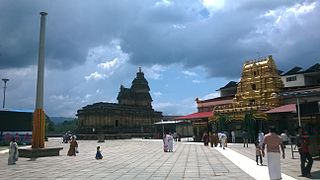
Adi Sankara’s Promise To His Mother
When Adi Sankara heard that his mother was unwell he returned to Kaladi alone. He was present when she passed away. The rest of his community refused to support him in performing her funeral rites. It was the custom that a Sanyasin would not perform the rites of a householder. Adi Sankara cremated his mother in the backyard of the house. His people refused to give him fire to light the pyre and he created his own using his siddhis or magical powers.
Establishment Of Mutts
Adi Sankara returned to Sringeri. He then toured the country and preached the Advaita philosophy where ever he went. Adi Sankara established the Govardhana Mutt at Puri and Mutt at Dwaraka. He debated and defeated leaders of many of the popular sects and philosophies. Adi Sankara convinced the rulers of the Pandya and Chola kingdoms by his philosophies. He even travelled to Guwahati in Assam. Adi Sankara went to the Himalayas and built a temple in Badrinath. He founded a mutt at Joshi, just below Badrinath, now called Joshimath. Adi Sankara then went to the Kedarnath temple and merged with the lingam in 820 AD. He was 32 years old.
Sanyasin Orders
Adi Sankara established 10 orders of Sannyasins. These 10 orders have 10 names, called the Dasanamis. The names are Sarasvati, Bharati and Puri for the Sringeri Mutt. Tirtha and Asrama for the Dwaraka Mutt. Giri, Parvata and Sagar are the names for the Joshi Mutt and Vana and Aranya for the Govardhana Mutt. Paramahansa is the highest title given after long years of study, self-realisation and meditation. There was no caste or social order for those in the ashrams and they were to dine with those of all strata of life.
Writing
Adi Sankara wrote commentaries on the Upanishads, Brahma Sutras and the Bhagavad Gita. He also wrote commentaries on the Sanat Sujatiya as well as the Sahashranama Adhyaya. These commentaries are the recommended reading for those who wish to delve deeper into metaphysics and the logic of spirituality. Those who seek practical knowledge of devotion prefer his works Aparoksha Anubhuti, Ananda Lahari, Viveka Chudamani, Atma Bodha, Atma-Anatma Viveka, Drik-Drishya Viveka and Upadesa Sahari. Sankara also wrote spontaneous verses that are both sweet and melodious.
Philosophy
The word Advaita reveres to the self and the whole; the Atman and the Brahman. Adi Sankara said ‘Ekameva Advityam Brahma’ which means that the absolute is only one and not two. Though there is a great multiplicity there is only one. He related this to the numerous stalks of sugarcane that still give a juice of the same sweetness. Adi Sankara described the Supreme (Brahman) as Nirguna (without Gunas), Nirakara (without form), Nirvishesha (with no attributes) and also Akarta (with no agents). The Atma on the other hand he said is self-evident and needs no proof. Just as one needs no proof that the self exists, there is also no need for proof of the existence of the Atman. The principle of Advaita states that there is a unity that underlies the diversity.
The words of Adi Sankara that summarise the philosophy are
Brahma Satyam Jagat Mithya, Jeevo Brahmaiva Na Aparah
This translates that the Brahman alone is real and that this world is unreal; the Jiva is identical with the Brahman.
Vivarta Vada
Adi Sankara also stated that the words and the body are but superimpositions of the Brahman. It is like a snake superimposed on a rope. When one learns of the rope the snake becomes an illusion and vanishes. So when a person gains the knowledge of the Brahman the illusion of the world and the body vanishes.
Understanding The Scriptures
Sankara advised that one should not just pick an isolated verse of the scriptures out of context. He advocated that one should also consider all 6 traits of the treatise to understand it properly. The 6 characteristics are; the introductory statement and conclusion, message, unique message, result, explained meaning as well as the reasoning. He applied this approach called Anvaya Vyatireka. This principle also states that one should accept the meaning of the work that matches with all the 6 characteristics and discard those meanings that are incompatible with any one of the 6.
He also discouraged ritualistic worship as that separates the concept of the self from the Brahman. Sankara advised a life of non-violence and ethics. He stated that rites and rituals such as Yajnas helped to prepare the mind for self-realisation.





